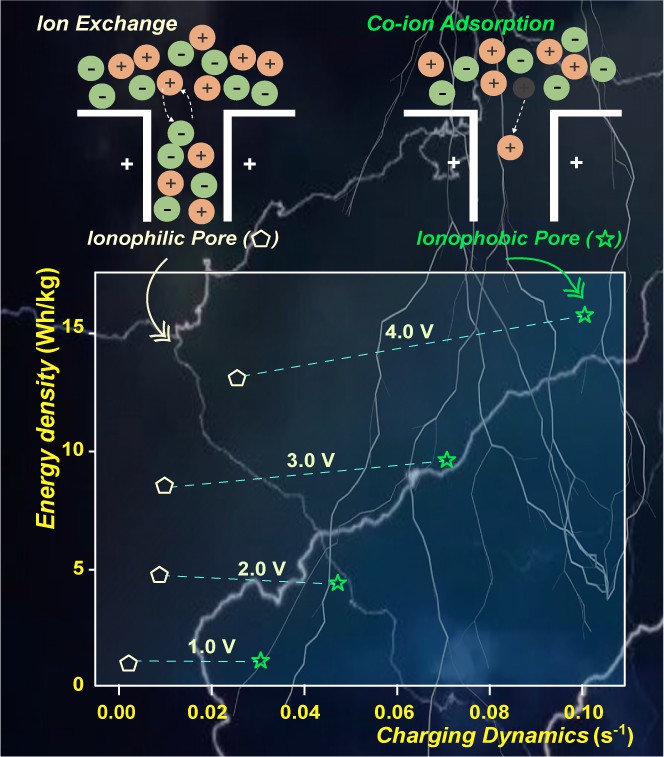Electric Double-Layer Capacitors (EDLC) with ionic liquids (ILs), as a new type of energy storage device, can fill the gap between battery’s power density and the conventional capacitor’s energy density. However, ILs in nanopore often exhibit sluggish diffusion dynamics, which hinders the high-power density.
Recently, a group led by Professor ZHANG Suojiang from the Institute of Process Engineering (IPE) of the Chinese Academy of Sciences (CAS) proposed a new strategy to synergistically improve the energy density and power density of EDLC with ILs based on the massive molecular dynamics simulations.
This study was published in the Journal of Materials Chemistry A on May 8 (DOI: 10.1039/d1ta01818c).
The researchers constructed a series of EDLC with different wettability (from ionophilic to ionophobic), where the electrolyte is 1-Ethyl-3-methylimidazolium Tetrafluoroborate.
They found that, compared with EDLC with ionophilic electrode, the charging time decreased by ~80% while the capacitance increased by nearly 100% (at U = 4V) in the EDLC with the extreme ionophobic electrode.
For the hydrophobic system, the IL cannot spontaneously enter into the porous electrode without charging; with the increase of charging voltage, both counter ion and co-ion will start to enter the nanopore when the voltage is beyond one critical value (~ 2 V). At the same time, the diffusion dynamics of ions is faster than the bulk one due to the sparsity of ions in the pore.
“For the charging of the ionophobic pore, it is like compressing a spring. Once the spring is released, much energy will be generated,” said Professor HE Hongyan of IPE, CAS.
This study also constructed the quantitative relations between charging time/capacitance and ionophobic property/pore geometry/electric potential. It revealed how abnormal co-ion adsorption, which does not exist in the common ionophilic system, enhances the overall performance of EDLC with ILs.
The idea of introducing ionophobicity could be one important strategy for the rational design of IL-based high-performance supercapacitors or other energy storage applications in the future.

Mechanism of better and faster supercapacitors with hydrophobic pore (Image by IPE)
Media Contact:
LI Xiangyu
Public Information Officer
Institute of Process Engineering, Chinese Academy of Sciences, Beijing 100190, P. R. China.
E-mail: xiangyuli@ipe.ac.cn
Tel: 86-10-82544826
 Search
Search




 京公网安备110402500047号
京公网安备110402500047号